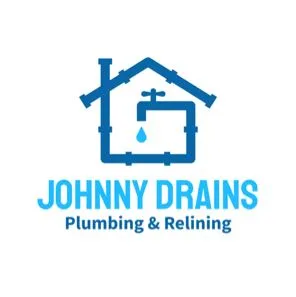Commercial vehicles are permanent feature of the Aussie business landscape. From trusted utes and commercial trucks to vans and sedans, for many business owners vehicles are considered a standard cost of doing business.
Yet they can also be a common tax trap. Without the right knowledge of the various deductions and thresholds, chances are you're paying more tax than you should or (as is common among busy business owners) making incorrect deductions that could potentially leave your business on the wrong side of the ATO.
In this guide we reveal the secrets of business vehicles, and how you can leverage various incentives and write-offs to maximise your deductions.

Get free initial support on our business helpline
Business Accountants


There are a number of simple things you can do to help maximise the deductions on your commercial vehicles.

To maximise your deductions, make sure you’re using the correct method to record your expenses which may vary depending on your business structure and vehicle type.
Remember, individual circumstances vary, so it’s important to tailor these tips to your specific business situation. Always stay informed about the latest tax rules and seek professional advice to ensure you’re making the most informed decisions for your small business.
We envisage a future where every small business can get the right support, at the right time, at the right price.
When it comes to claiming deductions, it’s important to understand the different reporting and
tracking methods available, which can vary depending on business structure and vehicle type. Let’s take a look at each method so you can determine which is best for your business.**
When claiming for a car, you’re able to use either the cents per kilometre method or the logbook method (you can use different methods for different cars and you can also change methods from year to year). However, when claiming for another vehicle, you must use the actual costs method.
Your logbook must contain:
For each journey, record the:
The actual cost method is where you claim expenses based on actual receipts.
You can only claim the percentage of the actual costs that relate to business use of the vehicle. Therefore, if a vehicle is used for both business and private purposes, you must separate private from business use and keep records that allow you to work out the business use percentage.
Quick tip: It’s important to note that tax laws and regulations can change, so it’s always a good idea to consult with a qualified tax professional when calculating and claiming tax deductions related to your vehicles.
For sole traders, when claiming for a car, you’re able to use all three of the methods outlined above (you can use different methods for different cars and you can also change methods from year to year).
However, when claiming for another vehicle, you must use the actual costs method.
These businesses must use the actual costs method to work out motor vehicle expenses, regardless of the type of motor vehicle.
In Australia, business vehicles are defined and categorised based on their intended use and purpose. Categorisations are important for taxation, registration, and regulatory purposes. Main vehicle categories include:
Light Commercial Vehicles (LCVs)
These are vehicles designed primarily for carrying goods and have a Gross Vehicle Mass (GVM) of up to 4.5 tonnes. Examples include vans, utes and small trucks used for business purposes.
Heavy Commercial Vehicles (HCVs)
These are vehicles with a GVM exceeding 4.5 tonnes. They include larger trucks and transport vehicles used for transporting goods.
Business Passenger Vehicles
These are passenger cars that are primarily used for business purposes. They may be owned or leased by a business for employee transportation or other business-related activities. Tax implications and deductions may vary based on their business use percentage.
Specialised Vehicles
Specialised vehicles are those designed for specific business purposes, such as construction, agriculture, or emergency services. Examples can include bulldozers and tractors.
Fleet Vehicles
Fleet vehicles refer to a group of vehicles owned or operated by a business or organisation. These vehicles can include passenger cars, LCVs, and HCVs, and they are typically managed as a single entity.
Rental Vehicles
Rental vehicles are used by businesses in the short-term for various purposes, including transporting employees or clients, attending meetings, or for specific projects.
Government and Non-Profit Vehicles
Government agencies and non-profit organisations often have their own categorisation and taxation rules for vehicles used in their operations.
2023–24: 85 cents per kilometre
2022–23: 78 cents per kilometre
2020–21 and 2021–22: 72 cents per kilometre
2018–19 and 2019–20: 68 cents per kilometre
2017–18: 66 cents per kilometre



*Retinue’s (ABN 66 658 618 449) payroll service includes the processing of hours and wages rates provided by you. We do not determine award rates for your employees or provide advice on the correct employment status of your employees. It is your responsibility to ensure that your employees are paid correctly and we recommend obtaining advice from specialised employment relations experts.
Protection is only provided for ATO investigations notified to us during the period which you are a client and relating to any tax returns or lodgements prepared by us. Fines includes any penalties and interest that may result from any errors made by us but does not include any additional tax liability that may result from an amended lodgement.
Liability limited by a scheme approved under Professional Standards Legislation.
©2024 Retinue. All rights.